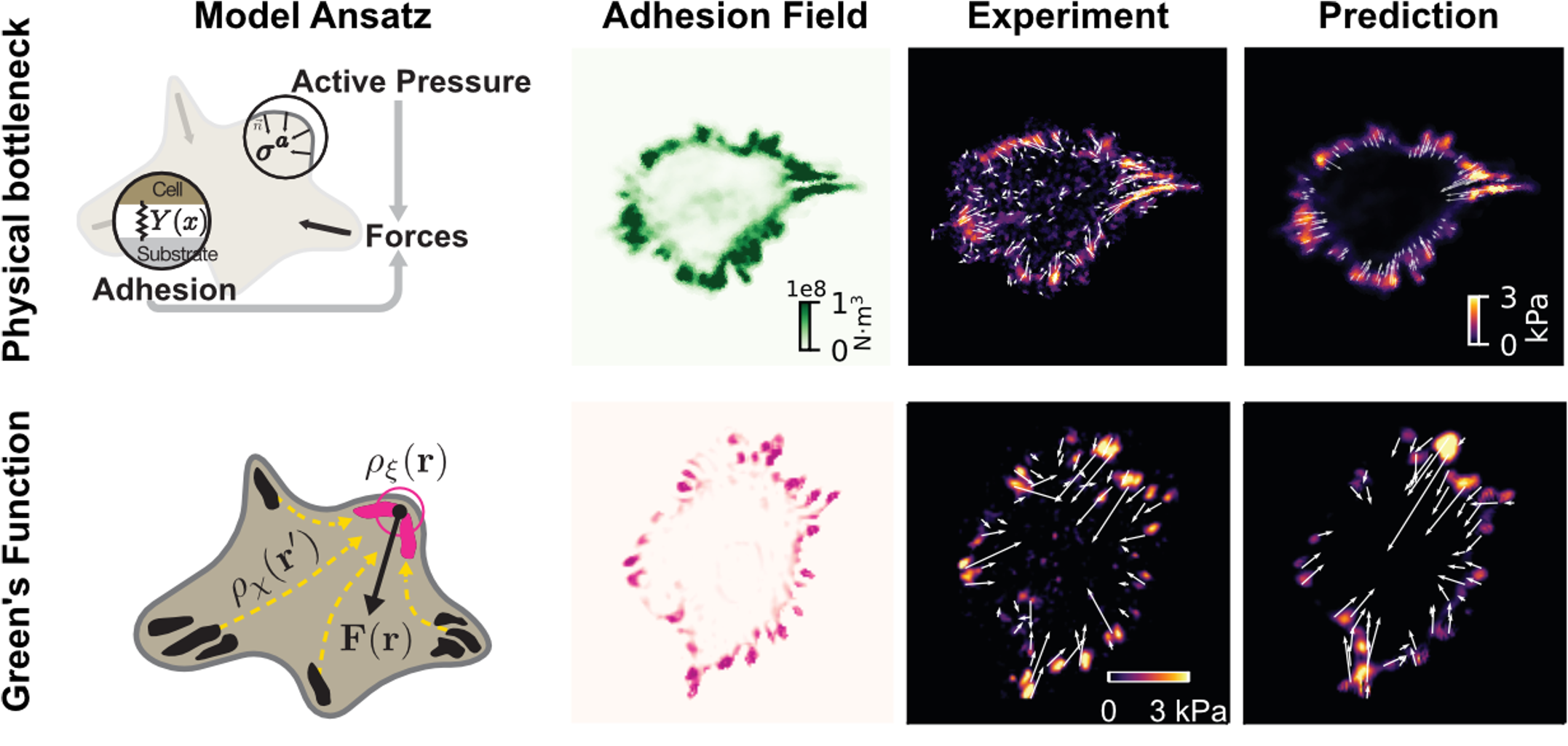 Cellular form and function emerge from complex mechanochemical systems within the cytoplasm. However, no systematic strategy exists to infer large-scale material properties of a cell from its molecular components. To tackle this issue, MRSEC researchers developed new deep-learning methods to infer mathematical models for the mechanics of cells directly from measures of the cells’ chemical contents. Surprisingly, neural networks revealed that a single protein was enough to reconstruct the cellular force distribution. To use this insight to construct models which could yield insight into the cell’s mechanics, we combined neural networks with physics to machine-learn models which are interpretable by construction (see Figure).
Cellular form and function emerge from complex mechanochemical systems within the cytoplasm. However, no systematic strategy exists to infer large-scale material properties of a cell from its molecular components. To tackle this issue, MRSEC researchers developed new deep-learning methods to infer mathematical models for the mechanics of cells directly from measures of the cells’ chemical contents. Surprisingly, neural networks revealed that a single protein was enough to reconstruct the cellular force distribution. To use this insight to construct models which could yield insight into the cell’s mechanics, we combined neural networks with physics to machine-learn models which are interpretable by construction (see Figure).
This work demonstrates how machine learning can be used to infer how biological materials achieve targeted material properties from distributed enzymatic activity. Our application of these methods to living cells is a stringent test of the approach in a situation where we have very little a priori knowledge about the material, but the pipeline itself is generic.